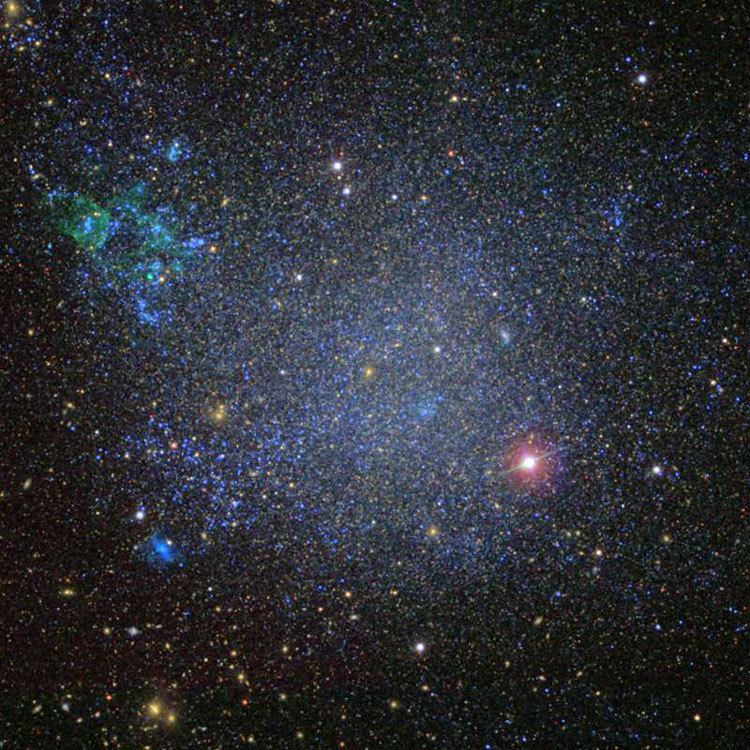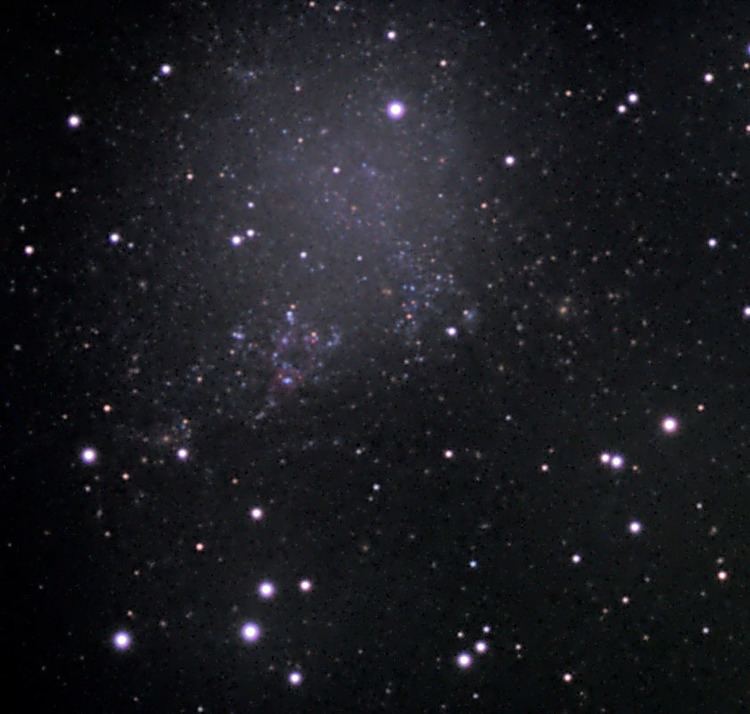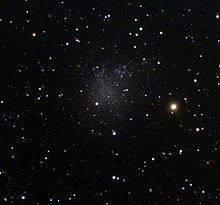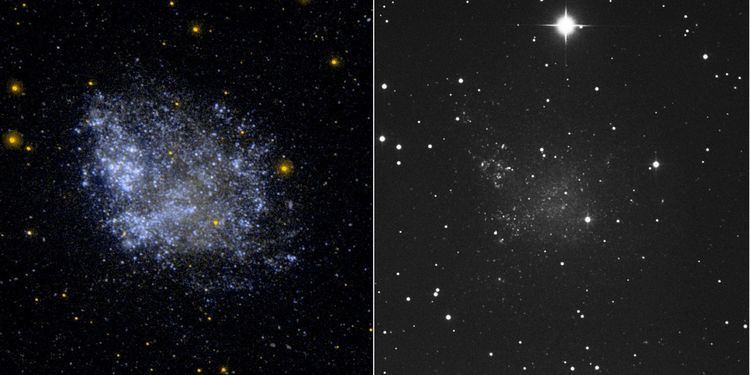Right ascension 01 04 47.8 Redshift -234 ± 1 km/s Apparent size (V) 16′.2 × 14′.5 Magnitude 9.9 Apparent magnitude (V) 9.9 | Declination +02° 07′ 04″ Type IB(s)m Apparent mass ~0.1 billion M☉ | |
 | ||
Distance 2.38 ± 0.07 Mly (730 ± 20 kpc) Similar NGC 147, NGC 6822, NGC 185, NGC 247, Wolf–Lundmark–Melotte | ||
Zooming in on the dwarf galaxy ic 1613
IC 1613 (also known as Caldwell 51) is an irregular dwarf galaxy, visible in the constellation Cetus near the star 26 Ceti. It was discovered in 1906 by Max Wolf, and is approaching Earth at 234 km/s.
Contents
- Zooming in on the dwarf galaxy ic 1613
- Zooming in on clean freak galaxy ic 1613 space video
- References

IC 1613 is a member of the Local Group. It has played an important role in the calibration of the Cepheid variable period luminosity relation for estimating distances. Other than the Magellanic Clouds, it is the only Local Group dwarf irregular galaxy where RR Lyrae-type variables have been observed; this factor, along with an unusually low abundance of interstellar dust both within IC 1613 and along the line of sight enable especially accurate distance estimates.,

In 1999, Cole et al. used the Hubble Space Telescope to find that the dominant population of this galaxy has an age of ~7 Gyr. Using its Hess diagram, they found that its evolutionary history may be similar to that of the Pegasus Dwarf Irregular Galaxy. Both galaxies are classified as Ir V in the DDO system. Also in 1999, Antonello et al. found five cepheids of Population II in IC 1613, giving self-evident support for the existence of a very old stellar population component of IC 1613. In 1999, King, Modjaz, & Li discovered the first nova ever detected in IC 1613.

IC 1613 contains a WO star known as DR1, the only one so far detected further away than the Magellanic Clouds.

Zooming in on clean freak galaxy ic 1613 space video


